Red-Eyed Tree Frog
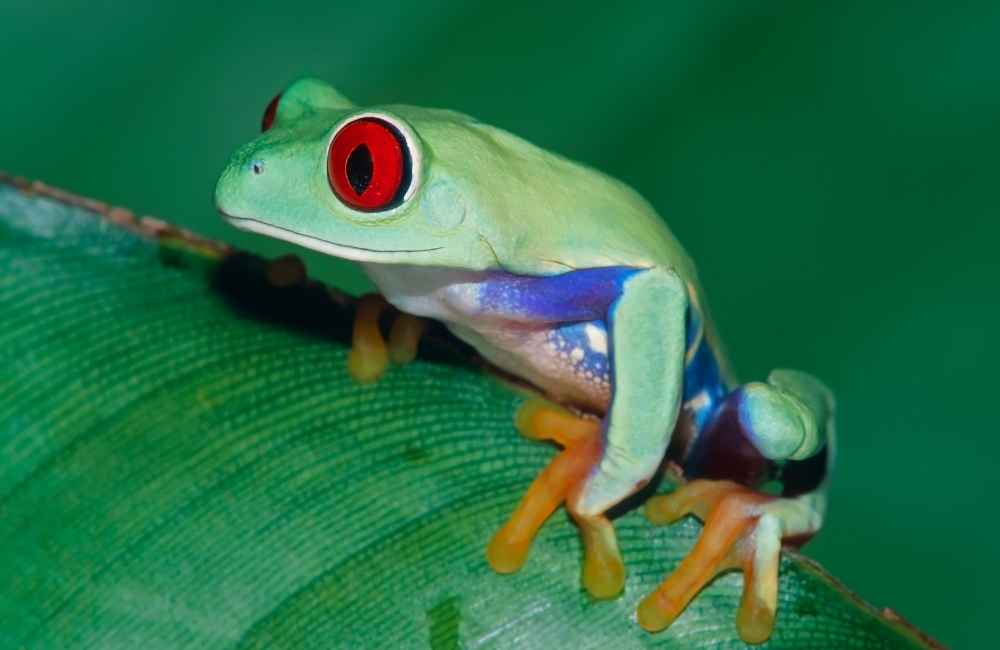
Red-eyed tree frogs are some of the most beautiful amphibians out there, but how do you identify them if you come across an army of frogs in the wild?
Back in the 1800s, a herpetologist named Edward Cope first discovered and identified these gorgeous frogs, and researchers haven’t looked back ever since.
These frogs are arboreal, which means they spend most of their time living in the trees. They are also nocturnal, which means that they are more active during the night. They are sometimes referred to as “monkey frogs” because of how high they can jump!
In this article, we’re going to take you through a detailed explanation about all things related to the red-eyed tree frogs. We’ll walk you through what these frogs look like, what they eat, where they live, and whether or not they are poisonous.
We’ll also walk you through their process of reproduction and how they behave.
Let’s dive in!
What does a Red-Eyed Tree Frog Look Like?
It probably goes without saying that this type of frog has a pair of bright red eyes, so identifying them is pretty straightforward. However, in addition to red eyes, these frogs have bright green bodies, much like the leaves of trees in the early days of spring. What makes these frogs even more beautiful is the yellow and blue stripes that run the length of their bodies on both sides.
When the red-eyed tree frog closes its eyes, its green eyelids help it blend in with its surroundings during the day. Since these frogs are nocturnal, blending into their surroundings while they sleep is crucial for their survival.
Red-eyed tree frogs also have bright orange feet and bellies. The layer of skin on their bellies is much thinner than the skin on their backs.
Their red eyes are their most easily identifiable feature because their eyes are huge and take up most of the space on their heads.
One of the most extraordinary things about these frogs is that they can occasionally change color, depending on what their mood is! When their mood changes, these frogs can switch from being a beautiful shade of lime green to a darker green or a dark red.
Their footpads are shaped like small cups that help them climb trees. Their feet also have a mucus-like substance that allows them to suction their feet to tree branches. These frogs also have longer legs than other frogs, which helps them swim and climb trees easily.
It’s important to remember that the bright green color on the frog’s body develops and gets more vibrant as the frog gets older. When frogs grow out of being tadpoles and into adolescent red-eyed tree frogs, they are usually brown all over their bodies.
Camouflage
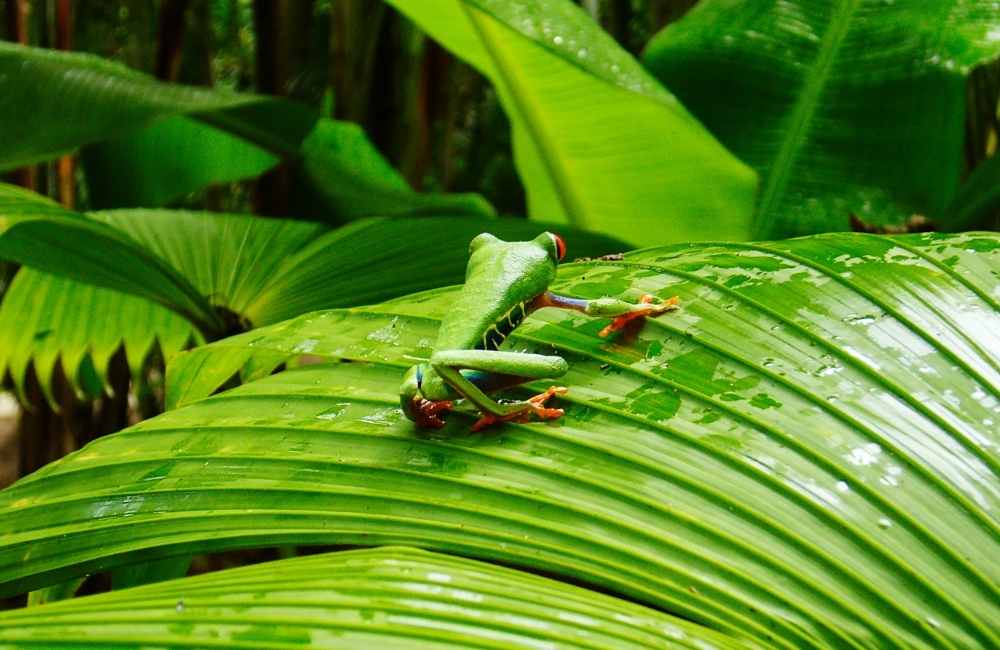
The reason that these frogs have red eyes is that their eyes serve as defensive weapons. Red-eyed tree frogs conceal themselves during the day by blending in with the leaves on trees. If a predator appears and the frogs feel threatened, they can simply open their eyes. The predator will be startled by the sudden flash of bright color, and the frog can quickly move away to safety. When the frogs suddenly open their eyes to scare off a predator, remember that this defensive technique is called ‘startle coloration.’
The frogs also conceal themselves from predators during the day by hiding the blue parts of their bodies with their green back legs. They tuck their feet under their stomachs and shut their eyes. Thanks to the fact that their eyelids are green, these frogs are almost completely invisible during the day.
The Third Eyelid
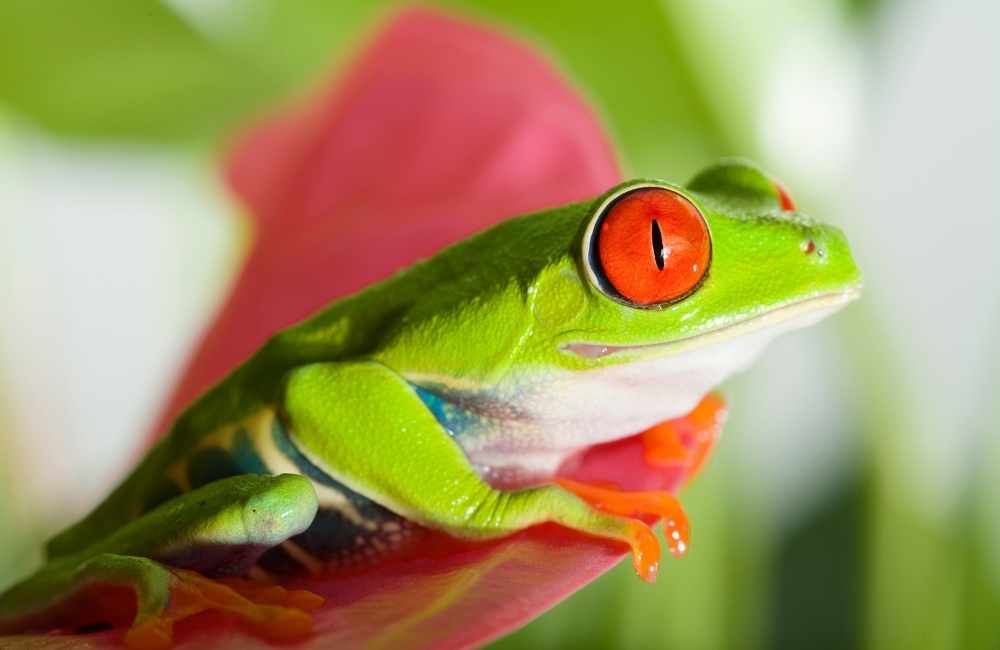
Every red-eyed tree frog has a third eyelid that is called the nictitating membrane.
The membrane helps the frog protect its eyes from a predator or danger, but it allows the frog to retain its vision. If a frog is being hunted or trying to attract a mate, that is when the membrane comes in handy. In other words, the third eyelid helps the red-eyed tree frog to adapt to its surroundings and various situations more easily.
How Big Do Red-Eyed Tree Frogs Get?
Unlike other frog species out there, red-eyed tree frogs are quite tiny, measuring less than three inches. The average red-eyed tree frog is about one to two inches tall. Female red-eyed tree frogs are always bigger than male frogs, which means that female frogs can grow up to three inches tall.
Where do Red-Eyed Tree Frogs Live?
In terms of geographic locations, you will find these frogs in Central America, particularly in the lowland regions with tropical rainforests. However, red-eyed tree frogs can also be found in certain parts of northern Mexico.
As you might have guessed from the frog’s name, they live in trees in rainforests and lowlands. However, you can also find them near bodies of water like ponds or rivers.
Since these red-eyed frogs belong to the larger frog family, their lives, like many other species of frog, begin in a small body of water, like a pond. They start their lives as tadpoles. Even though these frogs eventually move from living in a pond as tadpoles to living primarily on tree branches, it’s important to remember that red-eyed tree frogs tend to stay close to bodies of water because their skin needs to stay moist.
What do Red-Eyed Tree Frogs Eat?
Red-eyed tree frogs eat a diet consisting of insects, which is what makes them carnivorous creatures. Their everyday diet consists of insects like spiders, moths, crickets, flies, and grasshoppers. In some cases, the red-eyed tree frogs also eat frogs that are smaller than them. These frogs have long and highly sticky tongues that help them latch onto food when they go out hunting.
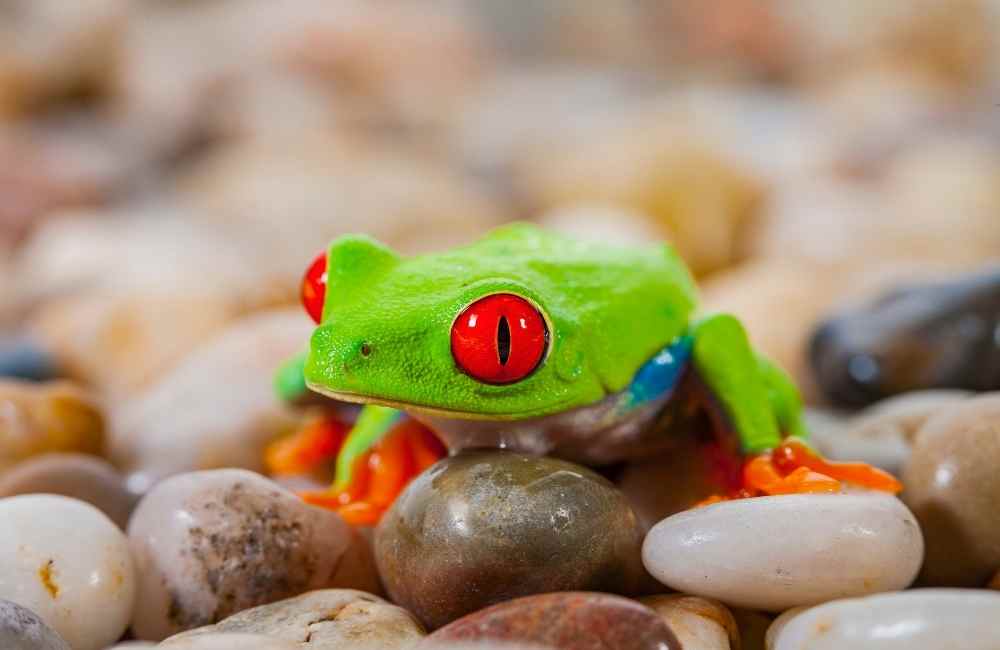
Are Red-Eyed Tree Frogs Poisonous?
If you’ve ever watched a documentary about frogs on Animal Planet, you might have heard scientists or researchers say that the more colorful a frog is, the more poisonous it is! However, this statement couldn’t be further from the truth when it comes to the red-eyed tree frog.
Red-eyed tree frogs aren’t poisonous, but they do have some toxins in their skin. Still, it is essential to remember that these toxins aren’t harmful in a way that could cause a predator to die. These toxins only cause the frogs to taste unpleasant.
Red-Eyed Tree Frogs Species and Family
Red-eyed tree frogs belong to the tree frog family. It is also known as Agalychnis Callidryas.
These frogs are arboreal hylids. Arboreal means that they belong to the family of creatures that reside in the trees, and Hylidae means that these red-eyed frogs belong to the family of frogs that live in trees.
If you want to take a quick look at the classification of the red-eyed tree frog, here’s a short list for you:
- Kingdom: Animalia
- Phylum: Chordata
- Class: Amphibia
- Order: Anura
- Family: Hylidae
- Genus: Agalychnis
- Species: Agalychnis callidryas
Reproduction in Red-Eyed Tree Frogs
It’s common knowledge that frogs begin their lives as tiny tadpoles, but how do frogs kickstart the reproduction process and create tadpoles?
First, the male frogs select a mate during the mating season. Studies have shown that when a male red-eyed tree frog is looking for a mate, it looks for a female frog whose body size has increased significantly. Once the males have selected a mate, they tend to shake the tree branches they live on. Shaking the tree branches helps the male frogs increase their chances of successfully making sure that their mate stays near them while keeping rival male frogs away.
Red-eyed tree frogs tend to mate during the monsoon season, particularly on days when rainfall is at its heaviest.
In order to attract a female frog, the males use a special call known as “chack.” The female frogs use this communication tool to find mates of their own. The sound of the chack call helps both male and female red-eyed tree frogs show each other that they are not predators while also helping them establish territory on the brand that they want to mate on.
Once the mating process begins, frogs utilize the process of amplexus.
Amplexus is the process by which the female red-eyed tree frog carries the male frog on her back for oviposition to take place. As eggs are released from the female’s body, the male frog grips the female’s body and fertilizes the eggs.
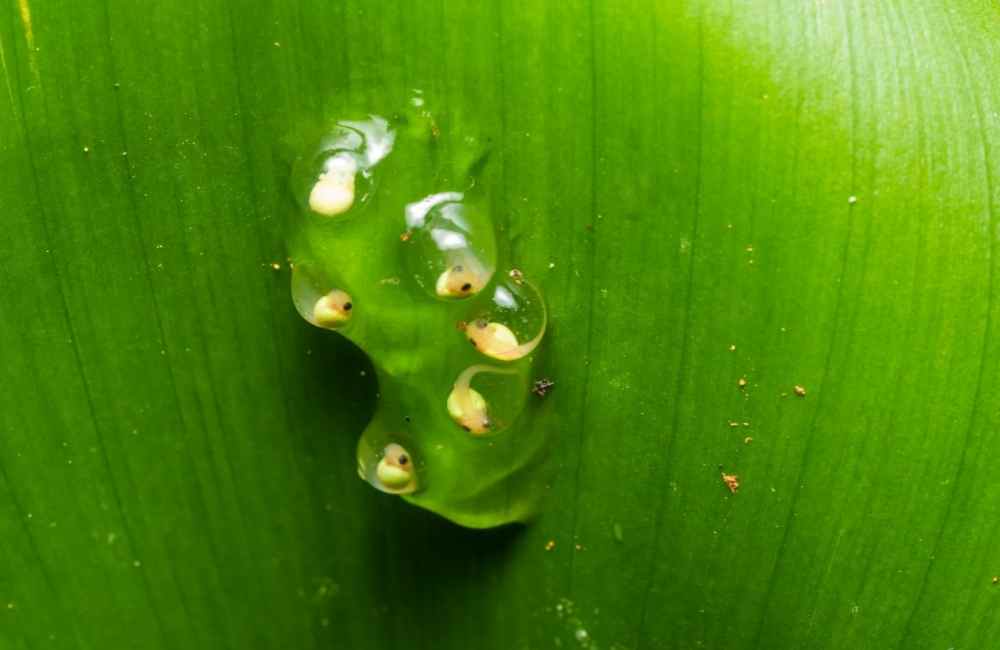
During the oviposition process, the female carries the male frog on her back for many hours at a time. If the eggs are not fertilized successfully, then the male frog will have to use the chack call to attract another mate. The eggs are fertilized externally.
Once the eggs have been fertilized, the female red-eyed tree frog will choose a place to lay her clutch of eggs. She will select a location like a leaf above a pond or a big puddle, and she will fold the leaf to protect the eggs from predators. Female frogs usually produce a sticky substance that is the consistency of watery jelly. They use this substance to stick the eggs together, thus preventing them from splitting open or becoming dehydrated.
Frogs lay their eggs above a small body of water because once the eggs develop into tadpoles, they will fall into the water below. The eggs turn into tadpoles quite quickly, usually after a week after being laid. They usually hatch in the night.
After the tadpoles fall into the water, they usually remain in the water for a long time, anywhere from a few weeks to a few months. Once they’ve metamorphosed into frogs, they will leave the pond and eventually migrate into the trees.
The amount of time to metamorphose depends on how long the larval stage lasts, depending on various environmental factors.
The color of the frog’s body starts to change after the initial stage of metamorphosis takes place. First, the tadpoles’ torsos change from green to brown. Their eyes start off as yellow, but eventually, they turn into a deep shade of red. One can identify a new stage of maturity each time the colors change on a tree frog’s body.
Phenotypic Plasticity
Phenotypic plasticity refers to the changes that take place in an organism, in this case, the red-eyed tree frog, where the frog’s behavior, development, and morphology are altered due to various environmental factors.
Red-eye tree frogs might hatch early if predators in their environment pose a threat to their survival.
Since these frogs evolve from tadpoles to fully grown frogs through the process of metamorphosis, it is safe to assume that their growth and development are altered when predators such as fish or dragonflies prey and feed on the tadpoles.
Phenotypic plasticity could result in the frogs developing physically at a more advanced rate, but facing threats could compromise their instincts. For example, the frog might develop more muscular limbs, but it might not know how to react to predators.
The Behavior of the Red-Eyed Tree Frogs
As we mentioned earlier, these frogs spend most of their lives in the trees, making them arboreal creatures. Thanks to spending more of their time climbing trees, these frogs have strong legs, and as a result, they are very good at jumping.
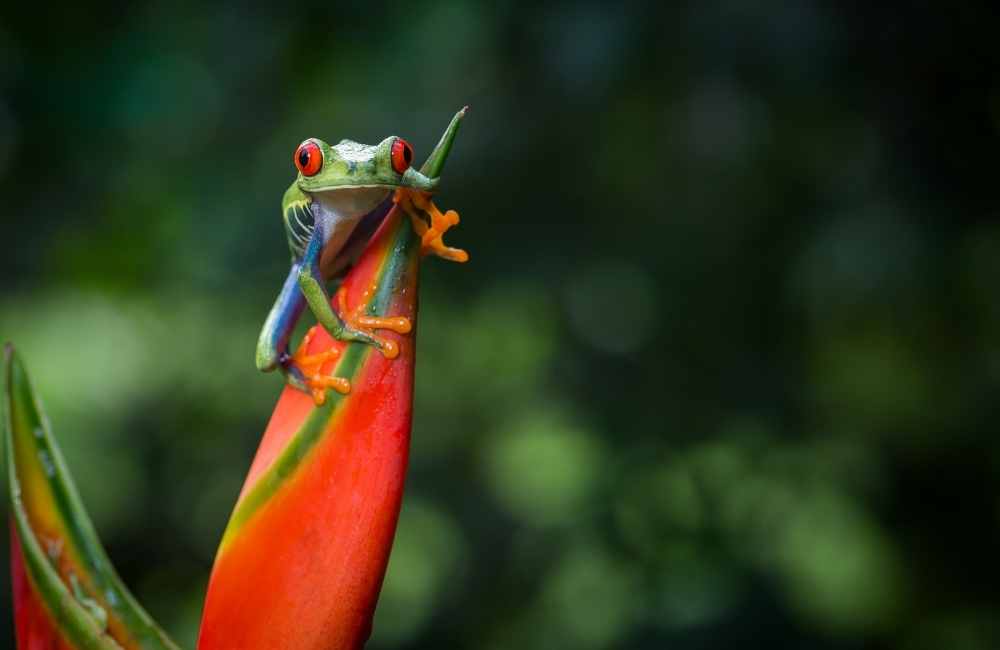
They are also nocturnal creatures, meaning that they spend most of the day asleep and camouflaged on the tree branches.
They aren’t very violent as a species. Red-eyed tree frogs use their eyes as defensive mechanisms to alarm predators and save themselves from being attacked.
Threats and Predators to the Red-Eyed Tree Frog
The main creatures that serve as threatening predators to the red-eyed tree frogs are snakes and spiders. Depending on the region, you might also find owls and toucans, along with bats, threatening these frogs. However, it’s important to remember that the red-eyed tree frogs use their eyes to startle predators while they quickly move to safety.
Importance in the Ecosystem
The red-eyed tree frog plays a significant role in the ecosystem, as it helps insects and other tiny frogs from overpopulating the forests!
Are Red-Eyed Tree Frogs in Danger?
While the red-eyed tree frog species is not likely to become extinct anytime soon, it’s essential to remain aware that these frogs could become endangered. This is because deforestation and urbanization in South America are taking place, causing these frogs to lose their homes. Climate change also plays a role in their endangerment.
Interesting Facts about Red-Eyed Tree Frogs
Here are five interesting facts that you didn’t know about red-eyed tree frogs:
- While these frogs live to be about five years old in the wild, they can survive for up to a decade if bred in captivity.
- The red-eyed tree frog’s scientific name is A. calliddryas. It is derived from two Greek words: kalos, meaning beautiful, and dryas, denoting a wood nymph. This name is fitting because these frogs live in trees!
- Many consider these frogs to be the poster child for the frog species because of their distinctive eyes.
- Before technology took over the world and gave us weather updates, these frogs were considered barometers in European countries because they would croak loudly before it started to rain.
- The red-eyed tree frog can change the color of its skin, depending on what its mood is.
Also Read: Axolotl facts for kids
Conclusion
In this article, we took you through a ton of information about the red-eyed tree frog. From where it comes from to what it eats, we’ve covered it all. The next time you submit a zoology report, we hope you include us in your citations!
